Any business framework has its area of recommended application, its advantages and drawbacks. In this article, we’ll discuss where the Balanced Scorecard framework wins and where it’s not that intuitive.
- Quick navigation: Advantages | Disadvantages

Balanced Scorecard Advantages
Where the Balanced Scorecard Wins.
I’m listing below some advantages of the properly implemented K&N Balanced Scorecard framework.
- What is a K&N Balanced Scorecard? Read this article to get a detailed answer.
- Is your scorecard implemented properly? You can use this audit checklist to find out?
Advantage 1. It Provides a Visual Picture of Strategy
Compare a one-page strategy map (a strategy map with cause-and-effect connections, business goals, initiatives, and metrics) with 100+ pages strategic plan. The strategy map wins.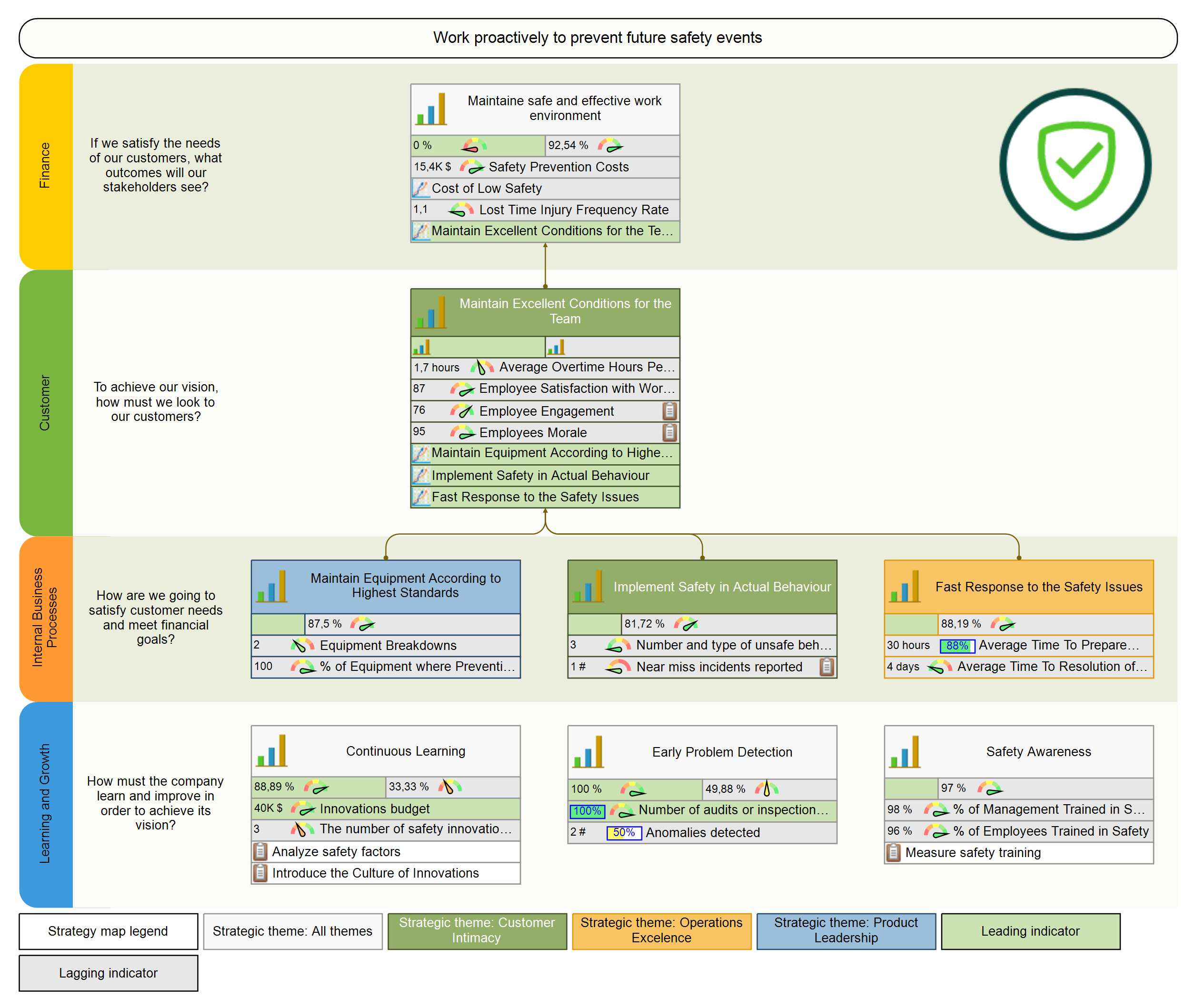
One strategy map with some supporting documentation can include all the details needed for effective strategy execution. To get all the benefits from it, make sure your team knows how to read this type of map.
Advantage 2. It Works as a Base for the Discussion
The consequence of the previous advantage – a properly designed Balanced Scorecard works as an excellent base to discuss business challenges and how the company is going to respond to them.
Do you have a new idea or challenge to discuss? Show where it stands on the strategy map. Show how it can contribute to the other goals or initiatives on the map.
 Advantage 3. It Works on Three Levels of Abstraction
Advantage 3. It Works on Three Levels of Abstraction
The drawbacks of many business frameworks is that they work on one level of abstraction only.
- You might have your list of goals (operational level), but they won’t be connected to the company’s mission or won’t be quantified out of the box.
- You might decide the top level growth priorities, for example using Three Horizons Framework, but those ideas will need to be connected to the performance indicators and specific operational goal.
In this sense, the Balanced Scorecard is more robust as it allows you to work on three levels of abstraction:
- Mission and vision
- Strategic priorities or themes
- Goals (quantified by indicators)
- Action level (initiatives and action plans)
Advantage 4. Support of the Business Context by Design
One of the challenges of performance management is that stakeholders should understand the business context. It’s not enough to define ambitious targets – you need to explain the whys and hows.
The Balanced Scorecard framework has a solid base to explain this context:
- The context for the goals on the map is defined by cause-and-effect connections as well as by the strategic themes.
- The context for the measures is defined “by design” as all metrics come aligned with certain business goals.
- The same applies to the initiatives – all action plans have context defined by business goals and are measurable using the performance metrics aligned.
Advantage 5. Easier Data Collection
As we discussed in the big data article, nowadays, the problem is not about having or processing large sets of data – the main challenge is to focus data mining efforts.
In this sense, the Balanced Scorecard framework simplifies data collection as your data scientists know what data you need (the definition of the KPI) as well as the reasons behind (the business goal aligned).
 Advantage 6. Cascading and Alignment Explained
Advantage 6. Cascading and Alignment Explained
The top-level strategy can be cascaded to the lower levels. The departments and business units can have their own strategy scorecards aligned with overall strategy.
A properly cascaded strategy has its advantages:
- It explains to the stakeholders of different levels how their efforts contribute to the overall strategy.
- The top managers have a better idea about how exactly their strategy is executed.
For example, we connected the goal from this map to the goal from another scorecard. To show this connection, the software used a special arrow icon.
Advantage 7. Easier Strategy Reporting
Annual strategic reporting might be time-consuming. With the Balanced Scorecard framework implemented, the strategy map with its supporting documentation is already a strategic report that is updated regularly.
Of course, you might want to present it in a different way, share some additional insights, but the core ideas are already there.
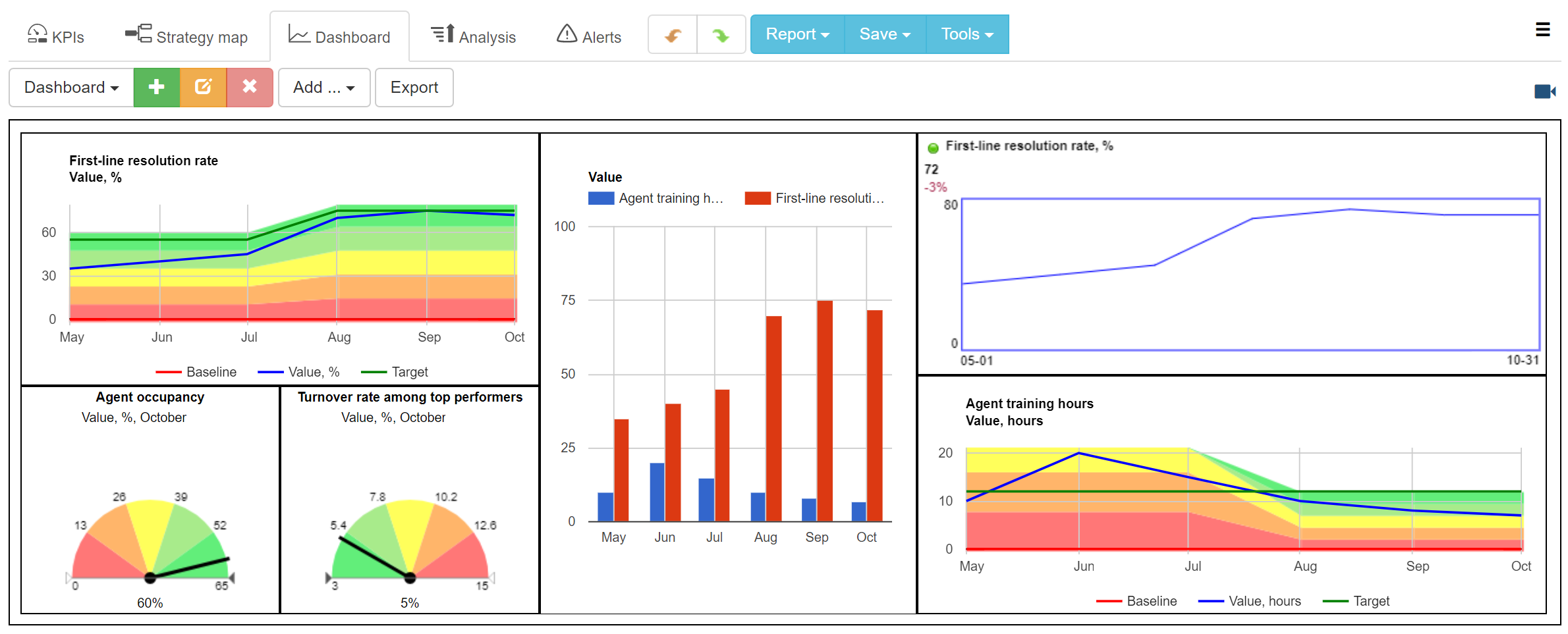
Software automation solutions help to make the reporting easier. For example, in BSC Designer, we have different predefined report profiles, as well as a possibility to create custom reports.
Advantage 8. The Framework is Well Accepted
With the growing number of frameworks, business professionals are getting more skeptical about trying out new frameworks. If there are no big names and proven success records behind the framework, then chances to get a buy in are low.
In this sense, the Balanced Scorecard has a strong reputation. The framework adoption figures (third place in the list of the 25 most popular business tools, implemented in more than 50% of Fortune 1000 companies) provide a good chance for a framework to be accepted by the management team.
Advantage 9. Easy to Get Trained in the Concept
The offer of the Balanced Scorecard training product varies from online training (see our Strategy Execution Training) to the on-site training offers combined with consulting.
The number of cases and examples of the strategy scorecards also provide a good starting point for new Balanced Scorecard projects.
Advantage 10. Software Automation Makes Things Easier
The choice of the software solutions for the Balanced Scorecard increase the chances of successful implementation.
Automation tools, like our BSC Designer, make it easy to manage performance data, as well as facilitate the maintenance of the strategy maps and dashboards.
A good starting point would be clarify the difference between KPI software and Balanced Scorecard software.

Balanced Scorecard Disadvantages
As any tool in the wrong hands, the Balanced Scorecard might not work as expected. I’ll share my perspective about each so called “disadvantage” to show how those typical mistakes can be avoided.
Let’s make it clear:
- The disadvantages that we will discuss, in most cases, are not the disadvantages of the framework but the downsides related to its specific implementation.
Disadvantage 1. Balanced Scorecard Term is Misleading
The “Balanced Scorecard” has become a buzzword:
- A typical misleading idea is that it is all about “balancing” KPIs by placing them into the four perspectives.
Solution:
Achieve an agreement on the level of terminology. Make sure that your team is talking about the K&N Balanced Scorecard, not just a set of performance indicators.
Disadvantage 2. No Focus on External Factors and Competitors
There is a point of view1 that the Balanced Scorecard framework focuses extensively on the internal factors but misses the external environment.
Here are my thoughts on this:
The strategy planning process can be divided into 5 steps that include strategy definition and description, as well as strategy cascading and execution. The Balanced Scorecard adds some value to the level of definition and description, but it’s main play zone is strategy cascading and execution.
On the level of strategy definition, the Balanced Scorecard is just one of the tools to generate insights. The best practice is to combine various frameworks like SWOT, MBO, 7-S, Three Horizons, Gap Analysis, PESTEL.
In this way, the goals related to the external factor or competitors will be naturally included among the other strategic goals on a strategy map.
Does Balanced Scorecard provide a framework for the analysis of external factors or competitors? Obviously, not. But once you’ve used other frameworks to formulate your competitive strategy, then you can describe and execute by using the Balanced Scorecard.
The same can be said about sustainability. The Balanced Scorecard does not address the ideas of sustainability directly (I’m talking about the three pillars of sustainability), but the Balanced Scorecard framework can be used to describe and execute the sustainability strategy of the organization.
Disadvantage 3. Lack of Risk Analysis
Similar to the previous disadvantage, risk analysis (and finding proper key risk indicators as a part of it) helps to shape strategy, taking into account additional points of view.
It’s up to the top management team as to what insights will be mapped on the strategy diagram in the form of business goals.
Disadvantage 4. Lack of Time Dimension
Lack of time dimension is named2 as another downside of the performance measurement part of the Balanced Scorecard framework.
Solution to the time dimension:
The comment about time dimension makes sense: with the changing business environment, specific goals and strategy, in general, need to be adjusted regularly.
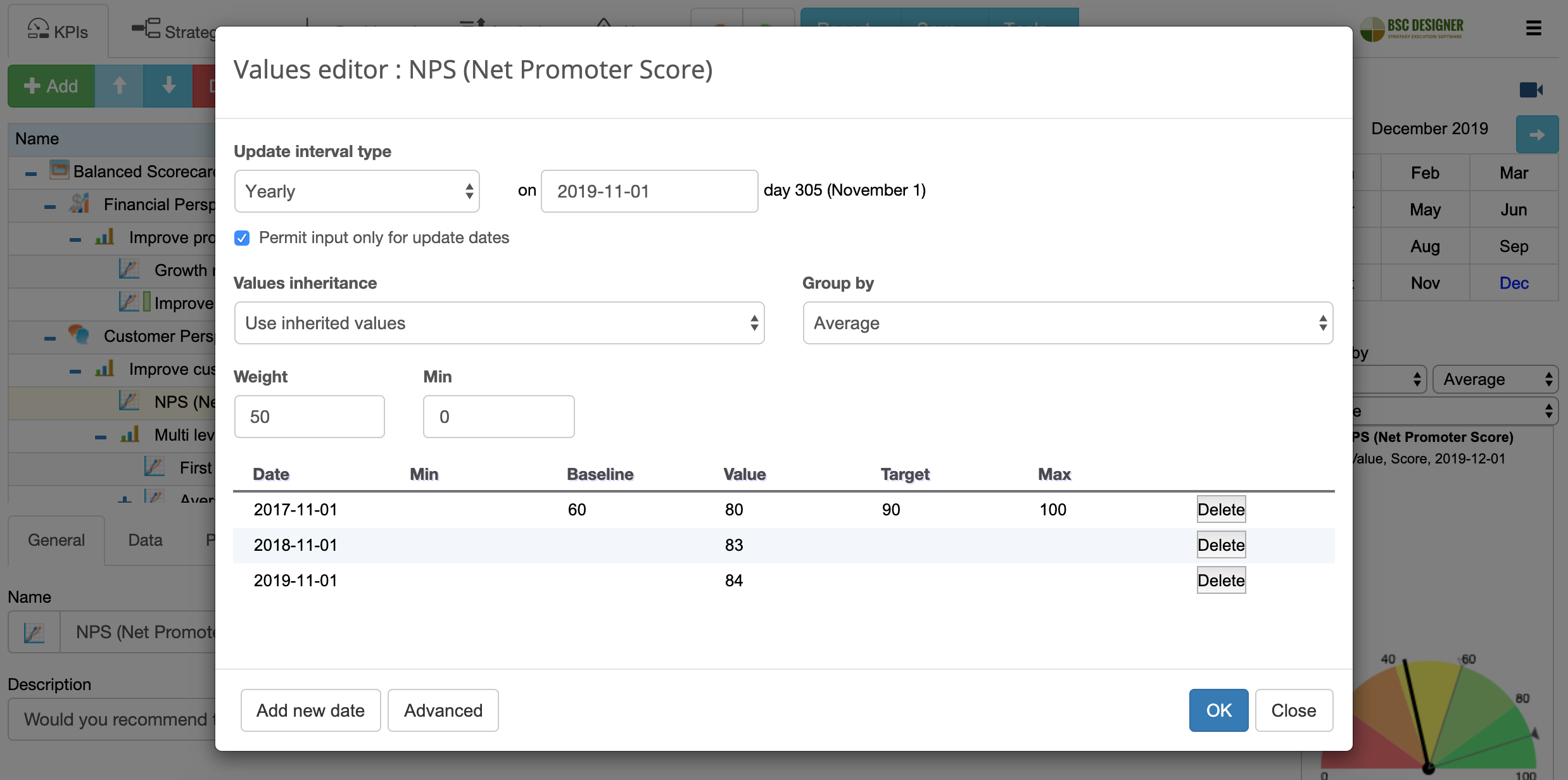
Fortunately, most Balanced Scorecard implementations include the “best-before” date:
- On the level of strategy, the rationale behind the strategic goals should be reviewed regularly (quarterly or annually).
- On the level of indicators, the targets are normally time-specific (especially if you are using tools like BSC Designer, where the indicators’ targets are assigned to specific dates).
- The initiatives aligned with the goals can have the money and time budgets associated with them (again, this is easy to implement with software automation).
Disadvantage 5. The Choice of Indicators is not Validated
When it comes to the choice of the indicators, there are a number of best practices that could increase your chances of success. Can we validate the choice of the indicators? Can we make sure they will lead us to success with a 100% guarantee?
Would such guarantee exist, it would contradict the very idea of strategy. Strategy is a hypothesis that needs to be validated with indicators. We are always experimenting, and in some experiments, the indicators won’t be the best ones, the goals will appear to be wrong, and the results will not be as expected.
There is nothing wrong about this, strategy is not a fixed plan, and our educated guesses will fail from time to time.
Disadvantage 6. Unidirectional Bottom-Up Cause-and-Effect Logic
The objects on the map (the goals) are linked by the cause-and-effect logic that goes bottom-up showing how the lower level goals support the higher level goals.
The unidirectional bottom-up logic doesn’t reflect the way many teams think about their strategy. The prototypes that we worked with during our strategy execution training confirmed that this confusion exists.
A typical example is that the achievement of the top level financial goal will actually power the goals from the lower perspectives. It looks like we need to connect the results of the financial goal with the input of the, for example, innovation goal…
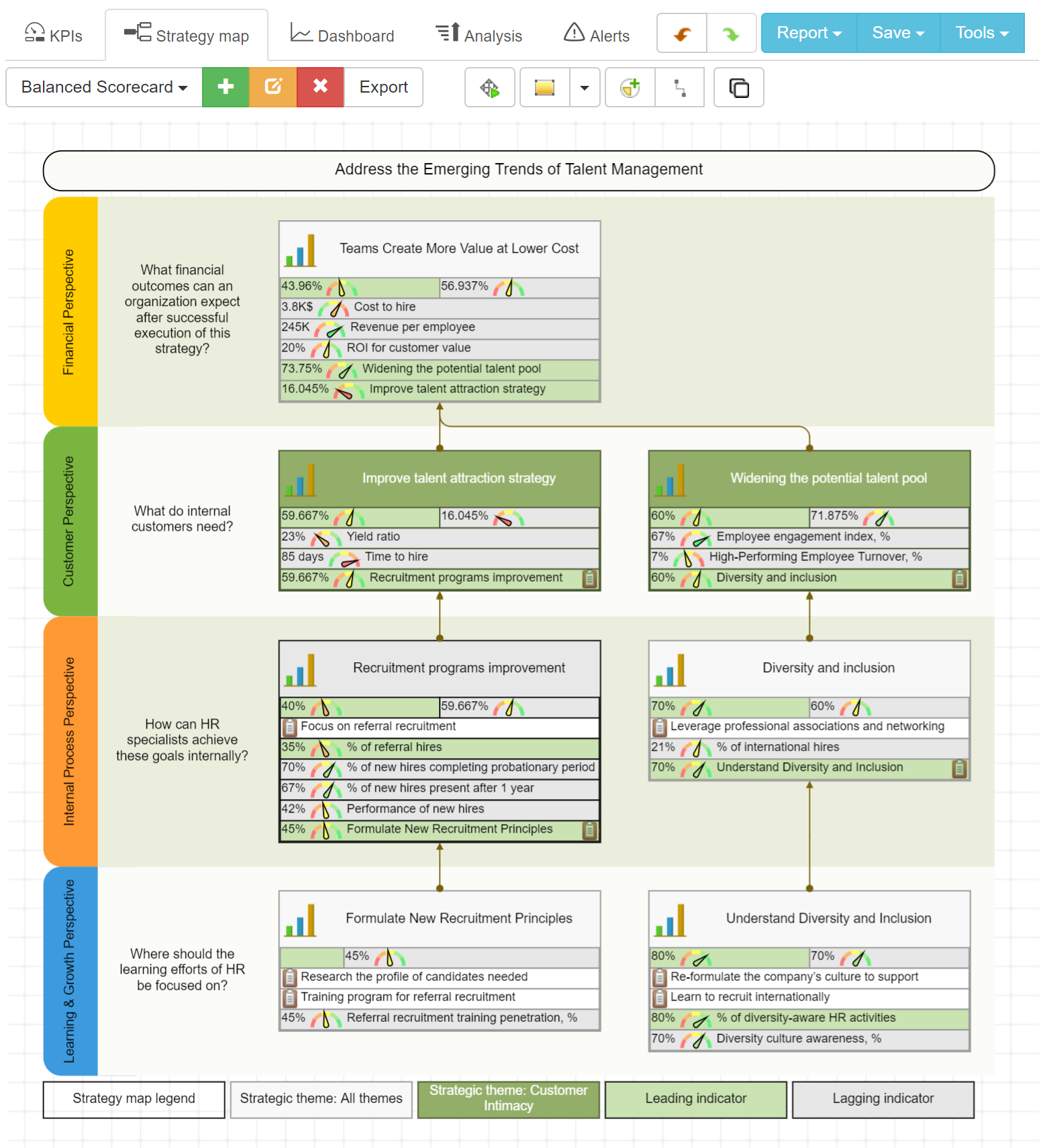
The Balanced Scorecard framework doesn’t reject these sorts of connections. According to my perception, the unidirectional cause-and-effect logic is a backbone of the strategy. When dealing with the model of the business, we want to see its big picture without all the minor connections. My recommendation is to only keep the main connections on the strategy map, explaining additional dependencies in the supporting documentation.
Disadvantage 7. Consultants Won’t Do the Balanced Scorecard for You
You can hire a consultant who will teach your team the method, help your team to create a Balanced Scorecard, but don’t expect to outsource it 100% to external consultants. The reason is simple – the Balanced Scorecard is about strategy, and your strategy is unique. No consultant in the world will know all the nuances your team knows.
The best idea is to hire a consultant who will train your team on the framework and guide you throughout the first steps.
At BSC Designer, we provide a free Strategy Map Wizard that will play the role of a strategy constant for you. It will ask you a number of questions and will use your answers to create a strategy map.
Following the same logic, the various examples of the Balanced Scorecard won’t help a lot. For example, we have a number of good examples here; you can use them as a starting point. The final version of the scorecard, adopted to the needs of your organization, will be very different from the starting template.
Disadvantage 8. Strategy Map / KPIs are Hard to Maintain
I would agree that the paper version of a strategy map is hard to maintain. Any minor change implies a lot of redesign, but with a software automation solution, the problem is significantly reduced.
For example, this map was created automatically using the data from the KPIs tab. Should you update anything (your goal or indicators) on the KPIs tab, the software will update the map accordingly.
Similar challenge is maintaining the scorecard’s metrics in spreadsheet software. As we discussed before, it is acceptable on the prototype stage, but later, the difficulties of maintenance will result in motivational problems.
My advice is to start using software tools at an early stage. For example, BSC Designer Online comes with a free plan that will discipline your Balanced Scorecard efforts from the very beginning.
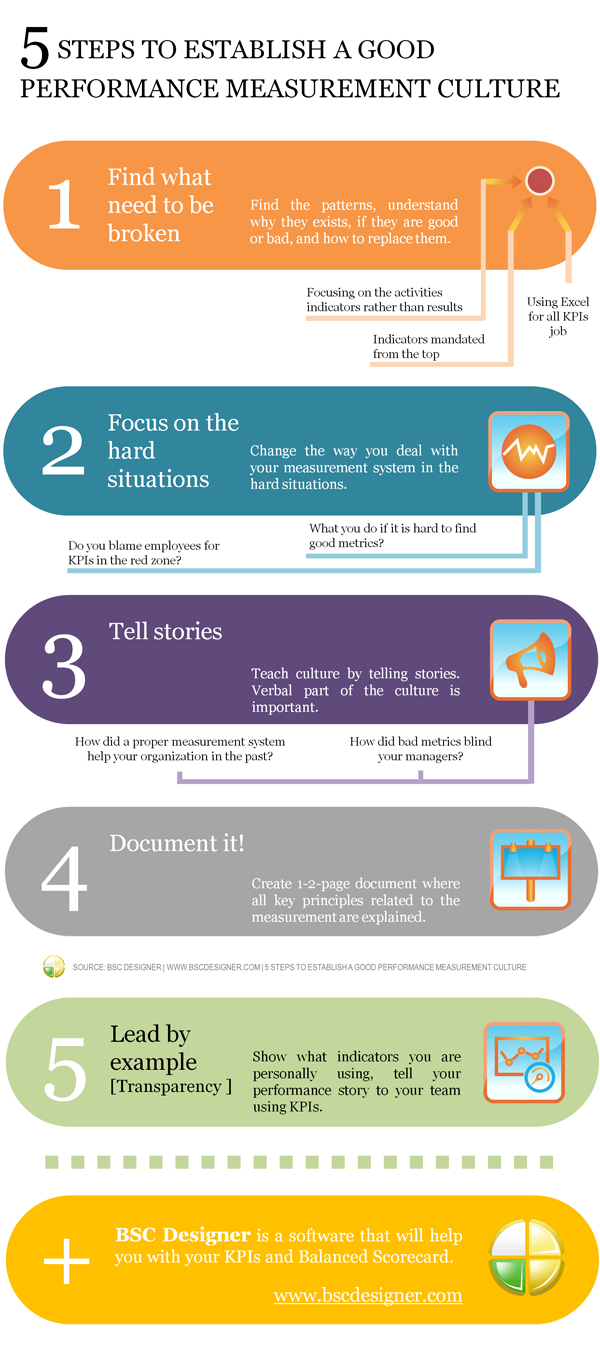
Disadvantage 9. Won’t Work without Cultural Shift
The Balanced Scorecard is perceived by many as:
- A tool from the top managers’ world
- A tool that is focused on the KPIs, and
- That those KPIs are used to control performance results.
With this perception, people are skeptical about the implementation of the framework, and, in many cases, they find a way to protect their bonuses by gaming the system.
The quick solutions for this are to:
- Avoid the Balanced Scorecard term (call it “our plan to win” for example)
- Declare that the KPIs are not linked to the bonuses (we discussed all the alternatives here)
The long term strategy would be to focus on the performance measurement culture in your organization.
How can you start working on your strategy-related culture? I would recommend doing some quick strategy awareness tests to see if your team understands your strategy and behaves accordingly.
Conclusions
The Balanced Scorecard framework is one of the most recognized strategy execution frameworks with a long record of successful implementation. If you are looking for a disciplined way to articulate and execute your strategy, then it should be in your business toolkit.
Most likely, you already have some performance measurement and management systems implemented. That’s why it’s a good idea to start with an initial diagnostic of your business to understand where you are now, what challenges you might face, and how to overcome them.
It’s OK to start a prototype of your strategy scorecard in spreadsheet software. Shifting to the specialized Balanced Scorecard software will help you to focus on the business part.
What do you think about the Balanced Scorecard framework? What are the most important benefits for you? What disadvantages of the framework or its implementation have you found?
Comparative Table of Strategic Planning Frameworks
- Strategy execution frameworks. Such as the Balanced Scorecard for the overall strategy and the more lightweight OKR framework for specific challenges.
- Strategy formulation frameworks. SWOT, Three Horizons, Constraints Analysis, PESTEL, Gap Analysis, etc. that help organizations to generate new ideas.
![]() Alexis is the CEO of BSC Designer. With over 20 years of experience in strategic planning, he assists organizations in articulating and executing their strategies. He is the author of ‘10 Step KPIs System‘ and ‘5 Step Strategy Deployment System‘, and has written over 100 articles on the topics of strategy and performance.
Alexis is the CEO of BSC Designer. With over 20 years of experience in strategic planning, he assists organizations in articulating and executing their strategies. He is the author of ‘10 Step KPIs System‘ and ‘5 Step Strategy Deployment System‘, and has written over 100 articles on the topics of strategy and performance.
 Advantage 3. It Works on Three Levels of Abstraction
Advantage 3. It Works on Three Levels of Abstraction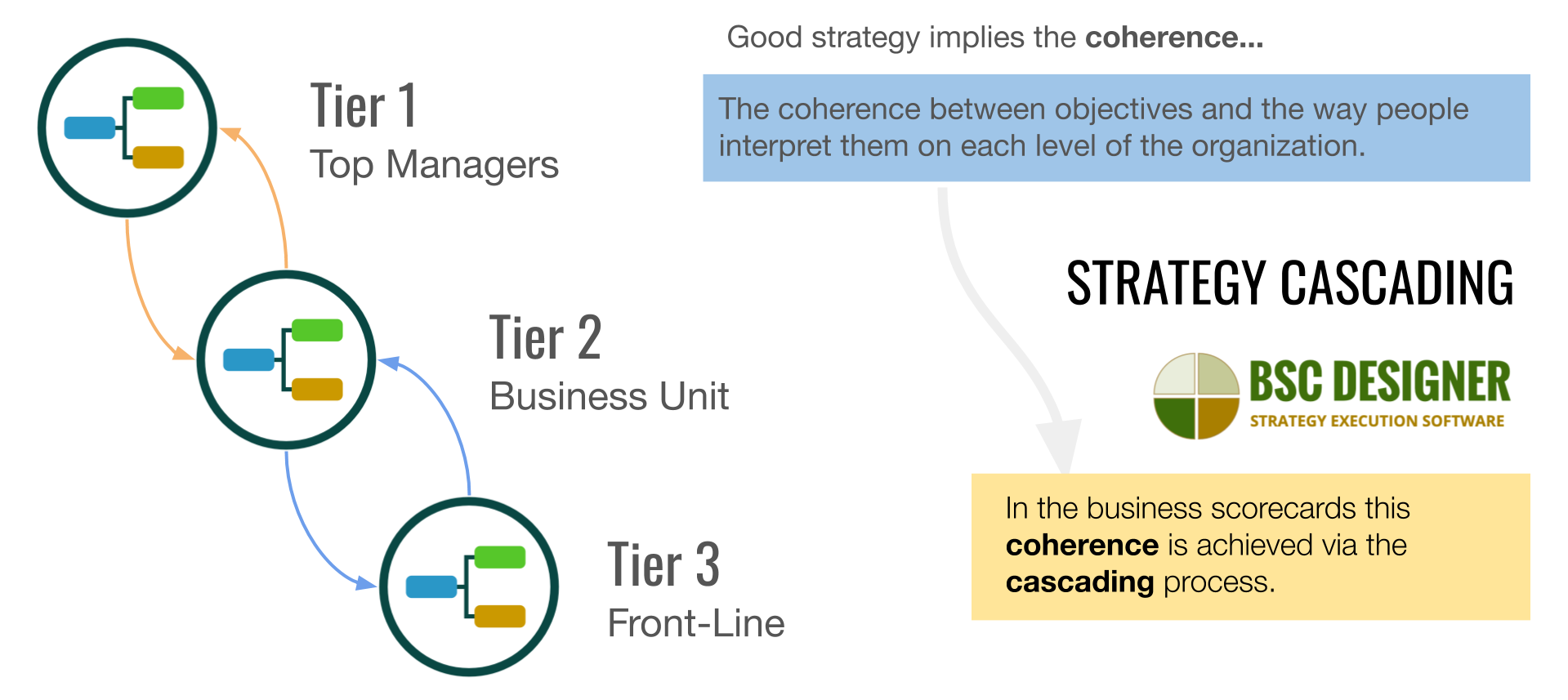

Useful Insights. Thanks for sharing